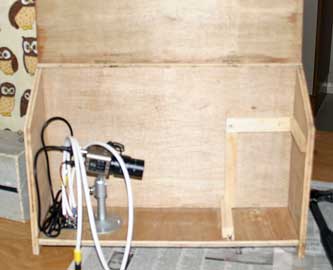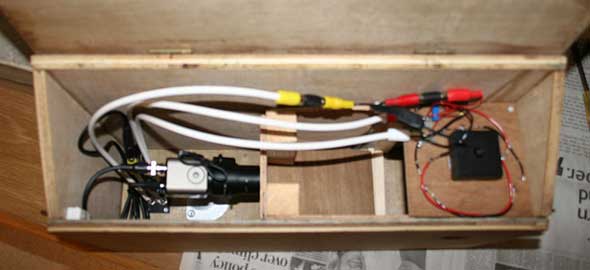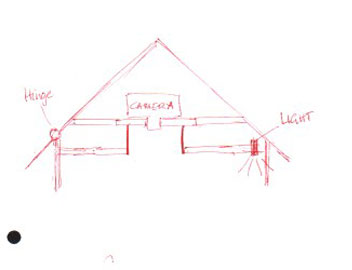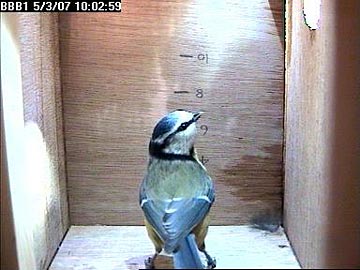
This is the box after it had been removed from the wall outside our house and had the glass plate and most of its supports removed. The planned nest area is at the right hand side of the picture. Power and video cables come into the box via a plate upon which four phono sockets have been mounted. There are two power connections - one being for the cameras and the IR lighting, and the other is for the LED lighting.
The other two phono connections are to carry the video signals from the two cameras.




